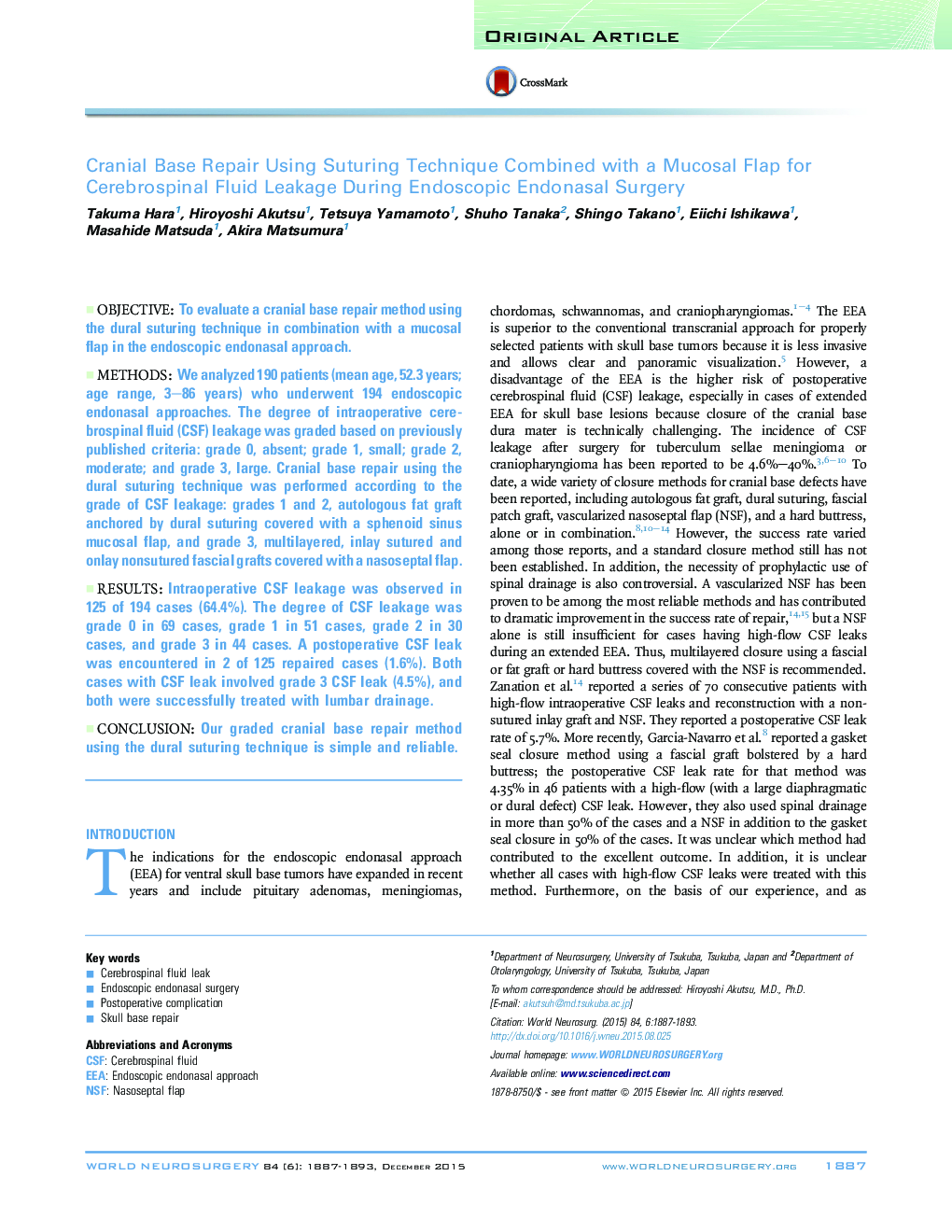| Article ID | Journal | Published Year | Pages | File Type |
|---|---|---|---|---|
| 6044543 | World Neurosurgery | 2015 | 7 Pages |
ObjectiveTo evaluate a cranial base repair method using the dural suturing technique in combination with a mucosal flap in the endoscopic endonasal approach.MethodsWe analyzed 190 patients (mean age, 52.3 years; age range, 3-86 years) who underwent 194 endoscopic endonasal approaches. The degree of intraoperative cerebrospinal fluid (CSF) leakage was graded based on previously published criteria: grade 0, absent; grade 1, small; grade 2, moderate; and grade 3, large. Cranial base repair using the dural suturing technique was performed according to the grade of CSF leakage: grades 1 and 2, autologous fat graft anchored by dural suturing covered with a sphenoid sinus mucosal flap, and grade 3, multilayered, inlay sutured and onlay nonsutured fascial grafts covered with a nasoseptal flap.ResultsIntraoperative CSF leakage was observed in 125 of 194 cases (64.4%). The degree of CSF leakage was grade 0 in 69 cases, grade 1 in 51 cases, grade 2 in 30 cases, and grade 3 in 44 cases. A postoperative CSF leak was encountered in 2 of 125 repaired cases (1.6%). Both cases with CSF leak involved grade 3 CSF leak (4.5%), and both were successfully treated with lumbar drainage.ConclusionOur graded cranial base repair method using the dural suturing technique is simple and reliable.
